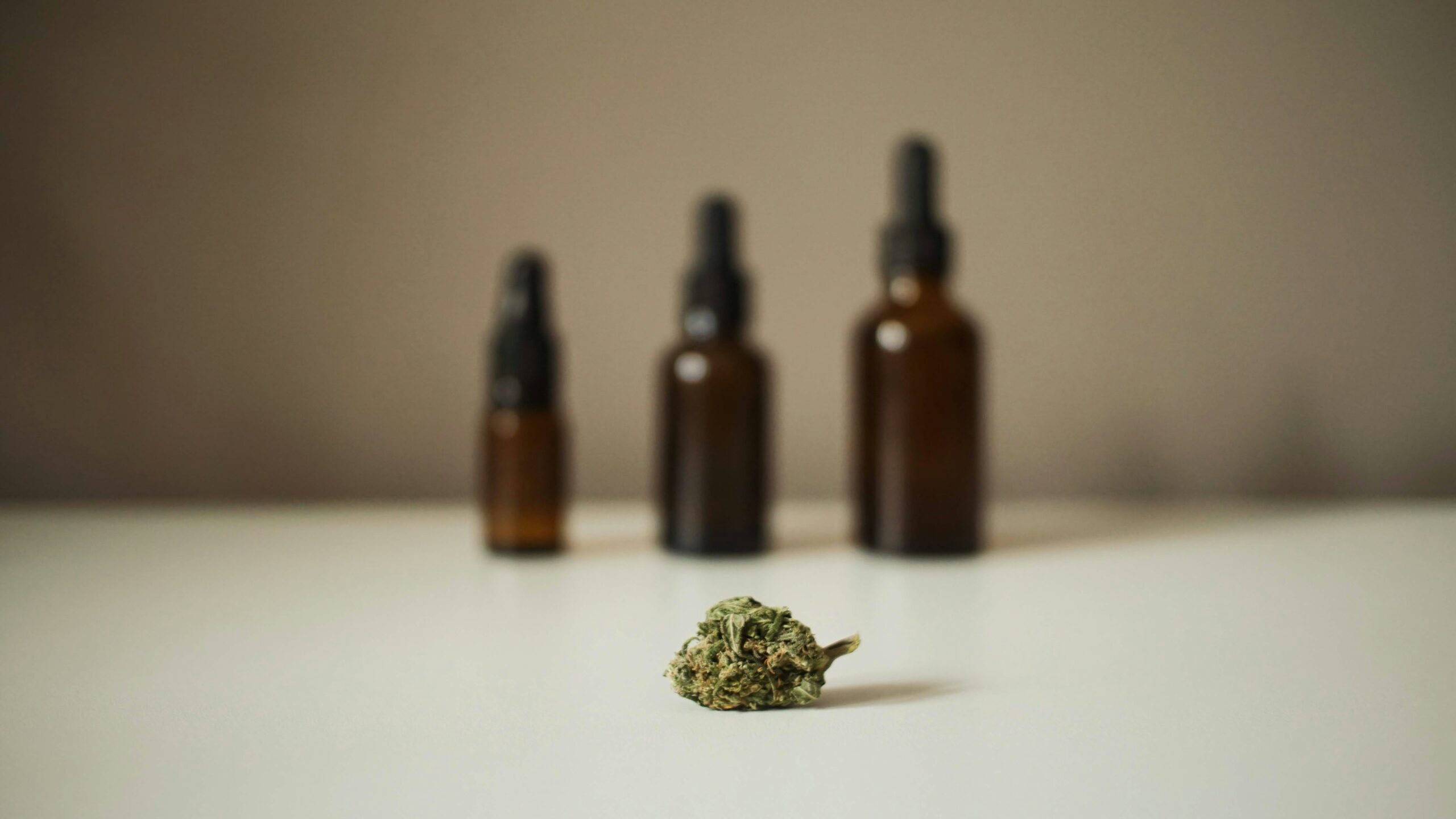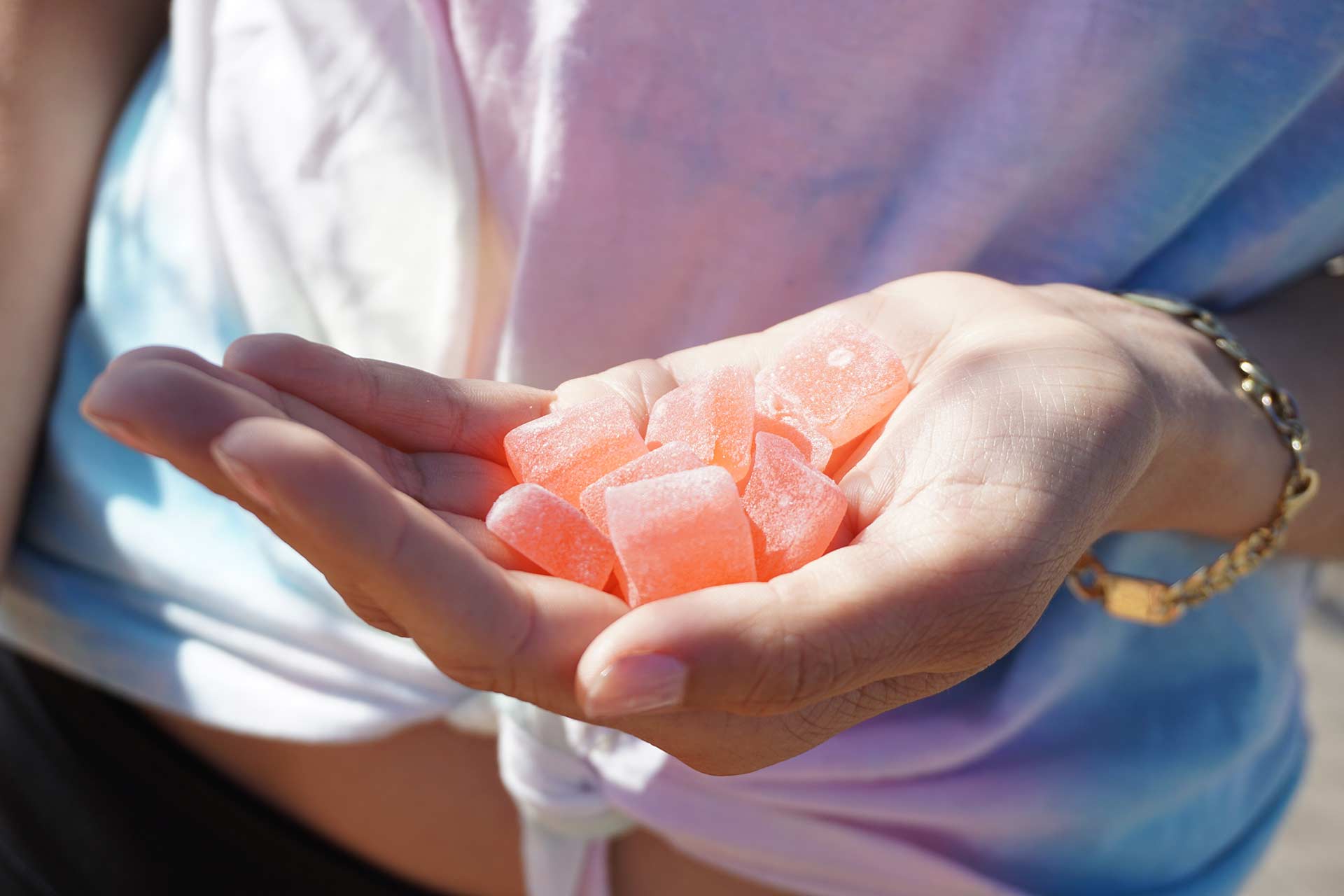Curious about microdosing THC? You’re in the right place. A growing number of cannabis consumers are finding that less is truly more when it comes to THC. Especially for those concerned with focus and productivity, microdosing THC spares you the potential distraction of intoxicating effects.
As a growing body of evidence suggests, the benefits of microdosing THC aren’t merely wishful thinking. In this guide, we’ll share everything we know about microdosing THC, including:
- The basics of THC microdosing and why people choose it
- What to expect from a microdosed experience
- How to get started, including dosing strategies and product types
- Tips for finding your ideal balance and staying consistent
Ready to explore cannabis microdosing with clarity and confidence? Let’s get into it.
What Is Microdosing THC & Why Do People Do It?
Put simply, microdosing is the act of consuming very tiny amounts of cannabis. The inspiration behind microdosing tetrahydrocannabinol (THC) is fairly simple. We already know that compounds such as THC and CBD, along with terpenes and other components, interact with our endocannabinoid system to impart certain effects. However, some people find the psychoactive properties of THC—that is, the high—can be distracting or unwelcome under certain circumstances. That’s where microdosing comes in.
It’s believed that microdosing cannabis was inspired by the world of psychedelics, where the practice of taking tiny amounts of hallucinogens such as LSD or psilocybin mushrooms has already been shown to impart a number of potential benefits.

What does the research on the benefits of microdosing THC say? One study from 2012 found that tiny doses of the synthetic cannabinoid medication Nabiximols provided better pain relief than traditional opioid-based painkillers. Another study published in 2014 found that extremely low doses of Nabilone, another synthetic cannabinoid compound, produced a “significant improvement” in symptoms of post-traumatic stress disorder (PTSD).
While these two studies incorporated synthetic cannabinoids, that may say more about the challenges of conducting cannabis research than an issue with cannabinoids themselves. For instance, a 2017 study found that lower doses of THC produced far better outcomes than higher ones in a mock job-interview scenario.
Why Many Choose to Microdose THC
Why not just take non-intoxicating products such as high-CBD or CBD-only options? You could, and of course, many do. But due to the broad range of medical impacts associated with THC, some researchers feel it can be preferable to consume very small amounts of products that contain multiple cannabinoids instead.
Some studies have shown that many people actually derive greater benefit from using lower dosages of cannabis. And, according to those who microdose THC, the subtle subjective effects of microdosing weed can remain enjoyable—and effective—over a longer period of time than they might otherwise be. Since the psychoactive effects are so mild, there’s also a far lower chance of any adverse effects, such as anxiety or paranoia, creeping up after a dose.
What Does Microdosing THC Feel Like? Potential Effects
When we discuss microdosing cannabis with our dispensary customers, the first question we often hear is: “What does microdosing THC feel like?” For the vast majority of people, consuming a microdose of THC is a subtly relaxing and barely intoxicating experience.
The effects of microdosing are generally far more subtle than a full dose of THC, and can vary from person to person depending on several factors, including the cannabis strain, dosage level, and your personal tolerance. In general, the effects are more subtle and controlled, allowing you to experience the possible therapeutic benefits of THC while continuing to go about your day unimpeded by the intoxicating effects. Here’s a side-by-side comparison to help put it into perspective.
Microdosing vs Traditional THC Use
In terms of intensity, THC microdosing effects tend to be far gentler compared with a full dose. Instead of a potentially potent mind and body experience, the small amounts used with microdosing weed are designed to deliver predictable, consistent, and, most of all, sustainable effects.
When it comes to duration, many feel that microdosing effects tend to last about as long as full-dose effects: 1 – 2 hours for inhaled products, and as long as 8 hours for edibles and tinctures. But again, because the amounts are so much smaller, the subjective effects will be far less intense than they would be under a regular dose.
How do people function on microdose THC? Whether you’re looking to add a little flow to your workday, inspire some creative spark, or reduce your THC intake for medical or work reasons, many microdosers report that using tiny amounts of weed invites a gentle ease into their routine without a potentially distracting high. Plus, if you’re new to cannabis or find you have a low tolerance, microdosing weed is a great way to get more familiar with the effects of cannabis in a milder format.
How to Microdose THC: Dosage and Tips
When figuring out the right THC dosage as a beginner, it helps to remember that feeling noticeably high isn’t the goal of microdosing.

Many people report that microdosing produces subtle effects, rather than strong ones, bringing a gentle sense of calm, focus, and clarity. That gentle balance is often what draws people to microdosing in the first place. In fact, you might even forget you took any cannabis at all.
How Much THC Is a Microdose?
A microdose of THC typically falls in the 1 mg to 2.5 mg range. As one 2020 study on pain management found, even a 1 mg dose of THC produced a significant decrease in pain compared with a placebo in many subjects.
Is it “bad” to feel slight intoxicating effects while microdosing THC? That’s entirely up to you. If your goal is maximum mental clarity and focus, then we’d recommend lowering your dosage until you can’t detect any psychoactivity whatsoever. But if you find you tolerate a little buzz, you can try increasing the dosage until the effects are just barely perceptible.
How to Find the Perfect Dose for You
Here are some tips for when you’re first starting out:
- Begin with a very low dose of 1 mg – 2.5 mg for a few days or up to a couple of weeks.
- If desired, increase your dose by a tiny increment after at least three days if you aren’t experiencing the desired effects.
- If you require a second dose on the same day, we recommend you wait at least two hours after taking the first one to avoid potentially taking too much.
At these low doses, the effects are unlikely to be extreme, but it’s a great policy to go slow with cannabis—no matter how small the dose!
Products to Try for THC Microdosing
Not all cannabis consumption methods yield the same results. In general, the most common forms used for microdosing THC are tinctures, edibles, and vapes. Here’s how they stack up:
Tinctures
Tinctures contain THC, CBD, or other cannabinoids suspended in a liquid such as glycerin, MCT oil, or alcohol. The liquid format allows you to measure your doses much more precisely, so whether added to food or drinks or merely swallowed on their own, you can dose them accurately and consistently. If taken this way, they’ll generally take effect within about 2 hours and last from 4 – 6 hours.
Tinctures can also be used sublingually. If you place a dose of tincture under your tongue and hold it there for a minute or so, the cannabinoids will be absorbed far more rapidly than if it were swallowed—typically within 15 – 45 minutes.
Edibles
 Edibles work in much the same way as tinctures, with similar onset times and duration. They’re especially handy when you want to access a precise dose and don’t want to fuss with a bottle and a dropper. Consistent, discreet, and delicious, edibles are a popular way to both microdose THC and CBD.
Edibles work in much the same way as tinctures, with similar onset times and duration. They’re especially handy when you want to access a precise dose and don’t want to fuss with a bottle and a dropper. Consistent, discreet, and delicious, edibles are a popular way to both microdose THC and CBD.
Flower & Vaporizers
Finally, there are vaporizers and flower. As with all inhaled cannabis, you’ll feel the effects very quickly—typically within a matter of minutes. However, it can be harder to tell the exact amount of THC you’re inhaling, and you might consume more cannabis than you intended.
With a little practice, though, most people figure out how to ingest a tiny microdose of cannabis, gleaning all the benefits of the plant without distracting effects. Typically, one to two small puffs from a bowl or hits from a vaporizer is considered a microdose.
First Time Microdosing THC? Set Your Intention
When you’re just starting out with THC microdosing methods, it’s good practice to focus on patience, mindfulness, and dosage tracking. Remember that you may not feel any subjective effects at all, so check in with your body and mind regularly. Some questions to ask yourself throughout the microdosing process include:
- Are you feeling any psychoactive effects?
- Does a specific dose improve cognitive function?
- Are you feeling any adverse effects?
When you’re first working with low-dose cannabis, stay mindful and consider keeping a cannabis journal to help you chart any changes over time. It doesn’t take long, and many find it helps them gain maximum value and benefits from the microdosing experience.
Start Your Microdosing Journey at Takoma Wellness
New to microdosing cannabis? We’re here to make the process simple and approachable. Whether you’re exploring your ideal THC level or just looking for a gentler entry point into cannabis, microdosing can be a great way to find your balance.
Don’t have a DC medical card yet? No problem. You can register in minutes and receive a 30-day Visitor Pass for just $30—no doctor’s visit required. And if you need support along the way, our knowledgeable patient consultants are always available to guide you.
As DC’s most trusted family-run dispensary, we’re proud to offer not only a wide selection of microdosing-friendly products, but also the one-on-one care to help you use them with confidence. Ready to learn more about microdosing THC? Stop by or explore our menu online. We’re here when you’re ready.

